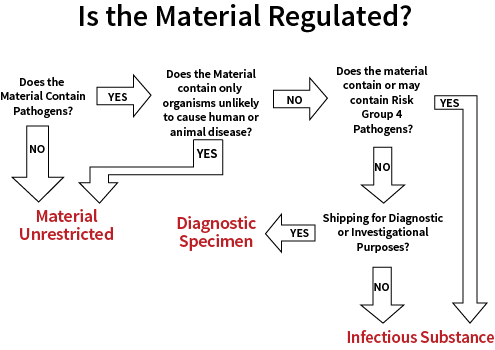| Tool Type | Decision Tree |
How to Use
How to Use
Federal (FAA, 49 CFR) and international agencies (ICAO, the branch of the United Nations that governs all international civil aviation matters), and IATA (International Air Transport Association) have in place numerous regulations for shipping of dangerous goods by surface or air. According to regulations, Biological Dangerous Goods “are articles or substances which are capable of posing a significant risk to health, safety or to property when transported”. For Biological material, the flowchart shown below indicates which materials are regulated and which are not.
Note: Dry Ice is considered a Dangerous Good. Training and certification is required, and the package must be labeled and shipped accordingly!
Transport of biohazardous goods off Stanford University requires training and certification prior to shipping. Training is mandatory for shippers (the person sending out the package or signing the air bill) and handlers (the people who transport the package) and is based on these regulations. Non-conformance of these regulations can result in a fine to the department found lacking.

